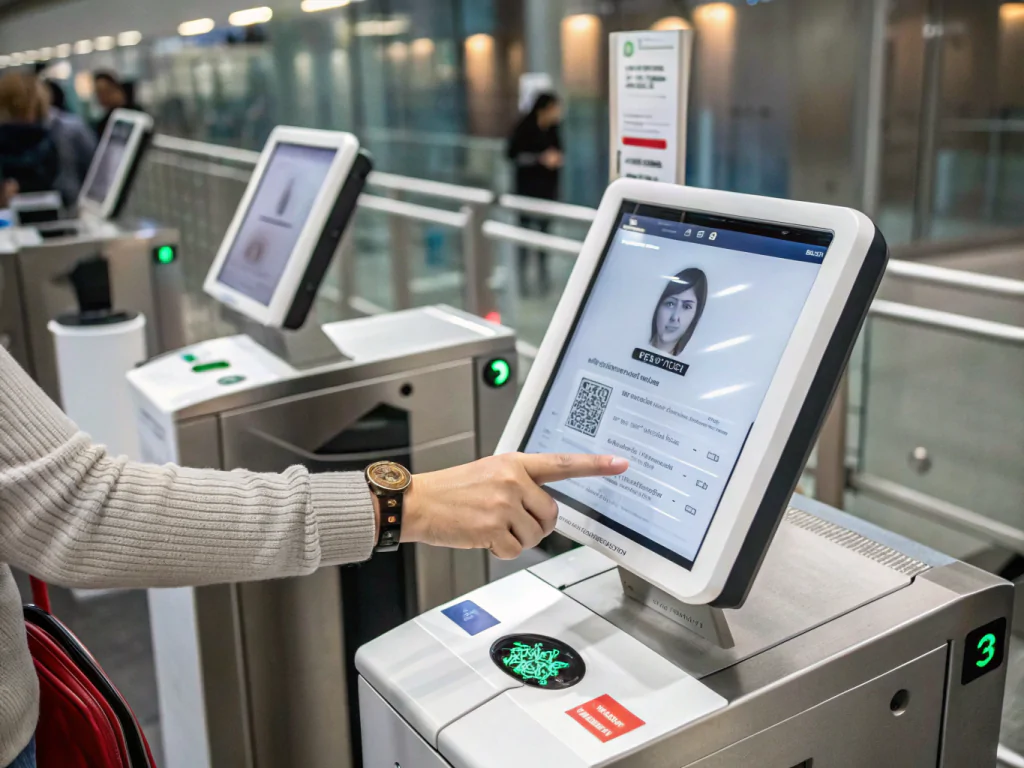I’ve worked on several government ID projects. Security and speed are always a problem. We needed something better. That’s when we tried palm vein devices.
Palm vein recognition devices make government digital identity systems safer. They are easy to use, offer contactless scanning, and stop identity fraud. Their SDKs and APIs help teams integrate them fast into government platforms.
I remember a meeting where a government client worried about ID fraud in social security. We showed them how palm vein scanners worked. They were impressed. Let me explain why.
[Table of contents]
- What Are the Advantages of Palm Vein Technology for Government Digital Identity?
- How Does Palm Vein Scanning Work in Digital Government Systems?
- Palm Vein Scan vs Fingerprint: Which Is Better for Government Projects?
- What Are the Integration Advantages of Palm Vein Devices?
- What Is the Purpose of Palm Vein Scanning in Digital ID Verification?
- Are There Any Disadvantages of Palm Vein Technology in Government Applications?
- What Is the Price of a Palm Vein Scanner for Government Digital ID Solutions?
- Summary
What Are the Advantages of Palm Vein Technology for Government Digital Identity?
Many government systems struggle with fraud and user verification. I have seen this problem many times.
Palm vein technology offers top security, contactless use, and very low error rates. It works better than many older biometric tools in government digital identity projects.
Palm vein recognition works because it uses the unique patterns of veins inside the hand. These patterns are almost impossible to fake. I like using it because it makes fraud nearly impossible.
Security and Privacy
This technology doesn’t show any personal data on the surface. Veins are inside the body, making them hard to copy.
- Low risk of data theft
- Internal patterns are private
- Contactless use protects hygiene
High Accuracy and Reliability
Here’s a table showing how palm vein compares to other biometrics I’ve worked with:
| Biometric Type | Accuracy | Hygiene | Spoof Resistance |
|---|---|---|---|
| Palm Vein | High | Contactless | Very High |
| Fingerprint | Medium | Touch-based | Low |
| Face Recognition | Medium | Contactless | Medium |
Scalable for Large Projects
In one project, we registered over a million users. Palm vein scanners worked smoothly in crowded areas like tax offices and hospitals.
How Does Palm Vein Scanning Work in Digital Government Systems?
I often get asked how palm vein scanning works. People think it’s complex, but it’s simple.
Palm vein scanners use light to read vein patterns inside your hand. These patterns are unique and help identify people quickly and safely.
I explain it to my clients like this:
The scanner shines near-infrared light. The light picks up the pattern of veins in the hand. Blood absorbs the light, so the scanner captures a clear image.
Step-by-Step Process
- User holds their palm over the scanner
- Infrared light reads the veins
- Software encrypts and stores the pattern
- System checks if it matches stored data
- Access is granted or denied
Easy to Use for Citizens
No contact means no fear of germs. I’ve noticed people are more willing to use these systems after the pandemic.
Palm Vein Scan vs Fingerprint: Which Is Better for Government Projects?
Governments often ask me if palm vein is better than fingerprints. I used to ask the same.
Palm vein scans are safer, more accurate, and cleaner than fingerprints. They work better in high-security government projects.
Fingerprints can wear out or get damaged. I’ve seen workers in agriculture or factories struggle with fingerprint scanners. Palm vein scanning fixes that problem.
Security Comparison
- Palm Vein: Internal data, harder to steal
- Fingerprint: External data, easier to copy
Hygiene and Public Acceptance
Palm vein is touchless. People like not having to press their fingers on a scanner.
Performance Table
| Feature | Palm Vein | Fingerprint |
|---|---|---|
| Contactless Use | Yes | No |
| Accuracy | Very High | Medium |
| Fraud Prevention | Very High | Low |
What Are the Integration Advantages of Palm Vein Devices?
I have integrated many biometric systems. Palm vein devices are some of the easiest.
Palm vein devices come with SDKs and APIs that help developers connect them to government systems fast.
The SDKs are easy to follow. The APIs work with Windows, Linux, and Android. I once integrated a palm vein device into a social security app in a few weeks.
Key Integration Features
- Cross-platform support
- API documentation is clear
- Fast development cycles
Real-World Example
I helped a tax office speed up its citizen verification process. We used palm vein scanners with their existing software. It took only a month to roll out.
What Is the Purpose of Palm Vein Scanning in Digital ID Verification?
Government services need to verify who people are. I’ve seen many methods fail.
Palm vein scanning checks ID with high accuracy. It works well for digital ID programs and helps stop fraud.
Palm vein works for people of all ages. It’s useful in healthcare, social services, and tax systems. In one project, we verified elderly citizens with no problem.
Use Cases in Government
- eID registration
- Social security verification
- Healthcare patient ID
- Taxpayer identification
Why It Works
Vein patterns don’t change over time. That makes them reliable for long-term ID verification.
Are There Any Disadvantages of Palm Vein Technology in Government Applications?
Nothing is perfect. I always tell my clients that.
Palm vein technology costs more up front. It also needs special devices, but the long-term benefits often make it worth the price.
I had a client worry about cost. But after looking at fraud prevention savings, they decided to go ahead.
Common Concerns
- High initial costs
- Need for user training
- Fewer vendors than fingerprint scanners
Balancing the Cost
Long-term, it saves money by cutting down on fraud and manual ID checks.
What Is the Price of a Palm Vein Scanner for Government Digital ID Solutions?
The first thing governments ask me about is the price. It’s important.
Palm vein scanners cost between $500 and $2000 each. Prices depend on features and vendor deals.
I’ve worked with suppliers who gave better prices for bulk orders. Government projects often buy through bidding platforms or exhibitions.
Cost Factors
- Scanner type
- Volume purchase
- Vendor service packages
Example Pricing Table
| Vendor | Unit Price | Bulk Discount | Support Included |
|---|---|---|---|
| Vendor A | $1800 | Yes | Yes |
| Vendor B | $1500 | Yes | Limited |
| Vendor C | $2000 | No | Yes |
Summary
Palm vein devices give governments secure, easy-to-use ID verification. They’re fast to integrate and work well for digital ID projects.



